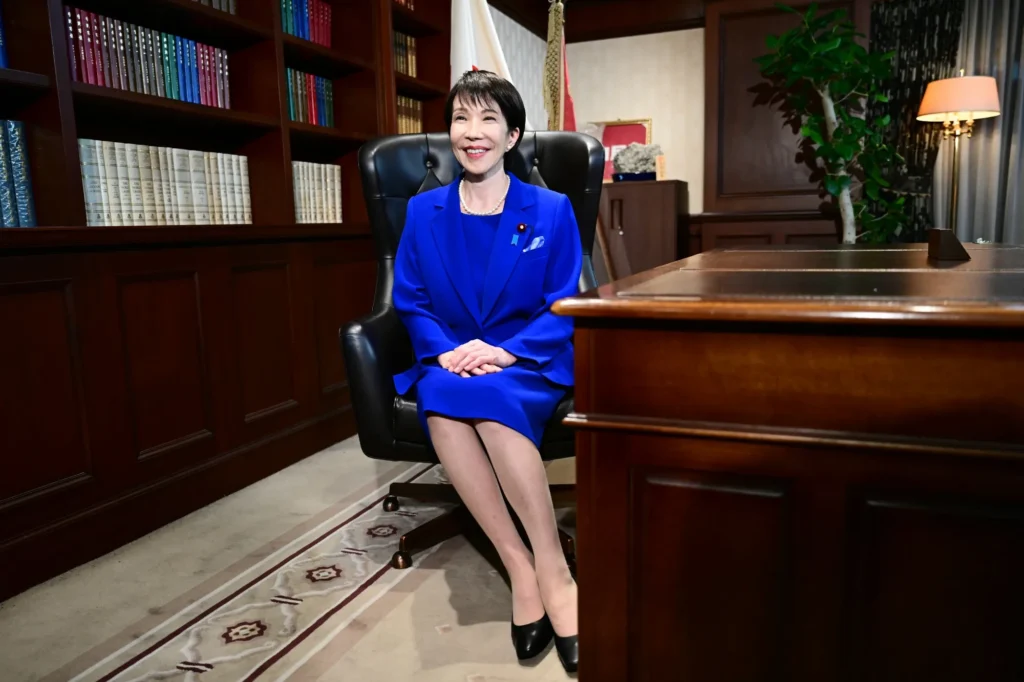Japan’s political landscape is undergoing a significant transformation with the rise of Sanae Takaichi, a long-time conservative lawmaker and admirer of the former British Prime Minister Margaret Thatcher, often dubbed the “Iron Lady.” Takaichi’s ascent signals a shift toward more assertive nationalism, economic reform, and traditional values, reflecting a departure from Japan’s postwar centrist consensus.
Background: Takaichi’s Rise
Sanae Takaichi has been a prominent figure in Japanese politics for over two decades:
- Political Career: She has served in various ministerial roles, including as Minister of Internal Affairs and Communications, building a reputation as a strong conservative voice.
- Ideological Leanings: Inspired by Margaret Thatcher, Takaichi advocates economic liberalization, national pride, and a robust defense posture.
- Leadership Path: Her recent rise to Japan’s premiership marks a historic first for a female leader in the country, blending gender milestone with a conservative policy agenda.
Observers note that Takaichi’s admiration for Thatcher underscores her commitment to market-oriented reforms and a decisive executive style.
Policy Implications of the Shift
- Economic Reforms
- Takaichi is expected to prioritize deregulation, fiscal discipline, and support for private enterprise, seeking to invigorate Japan’s long-stagnant economy.
- Tax reform and incentives for startups and technology firms may become central to her domestic agenda.
- National Security and Defense
- Her leadership signals a more assertive defense policy, particularly regarding regional threats from China and North Korea.
- Potential expansion of Japan’s Self-Defense Forces capabilities and a stronger U.S.-Japan security alliancemay be on the horizon.
- Social and Cultural Policies
- Takaichi advocates traditional family values and education reforms, reflecting a conservative approach to social policy.
- Her administration may promote initiatives emphasizing national heritage, patriotic education, and community cohesion.
- International Diplomacy
- Takaichi’s foreign policy is expected to balance strong ties with the U.S. with cautious engagement with regional neighbors.
- Trade, security cooperation, and technological partnerships could see renewed emphasis under her leadership.
Domestic Reception
The shift to a right-leaning government has elicited mixed reactions:
- Supporters: Conservative voters and business leaders welcome her decisive leadership, market reforms, and emphasis on national security.
- Critics: Progressive groups and opposition parties express concern over potential erosion of civil liberties, social inclusivity, and diplomatic flexibility.
- Public Sentiment: Surveys indicate a divided electorate, with enthusiasm for reform tempered by concerns over polarization and economic inequality.
Regional and Global Implications
Takaichi’s premiership could have far-reaching consequences for Asia and beyond:
- China-Japan Relations
- A firmer stance on territorial disputes and security issues may heighten tensions with China, particularly over the East China Sea.
- North Korea and Regional Security
- Strengthened military capabilities and alliances may act as a deterrent against North Korean provocations.
- Economic and Trade Policy
- Japan’s trade posture could shift toward bilateral deals and strategic partnerships rather than multilateral engagements.
- Emphasis on technology and energy security may reshape supply chains in Asia.
- U.S.-Japan Alliance
- Takaichi is likely to deepen collaboration with Washington, emphasizing defense, intelligence-sharing, and regional stability.
Challenges Ahead
While Takaichi’s leadership represents a historic rightward shift, several challenges remain:
- Aging Population and Demographics: Japan faces labor shortages, pension pressures, and declining birth rates, requiring careful economic and social policy.
- Economic Stagnation Risks: Deregulation and reform efforts may face resistance or short-term disruption in traditional industries.
- Diplomatic Balancing Act: Assertive national security policies must be balanced with maintaining stable regional relations and global trade ties.
Analysts caution that while Takaichi brings vision and decisiveness, implementation will require navigating entrenched bureaucracies and complex political dynamics.
Historical Context
Takaichi’s political philosophy resonates with Japan’s postwar conservative leaders but reflects a more ideologically driven, assertive stance. Her Thatcher-inspired approach emphasizes:
- Market liberalization to drive economic growth
- National pride and sovereignty in foreign policy
- Strong executive governance over bureaucratic inertia
This marks a clear departure from Japan’s traditional centrist or consensus-based political strategies that have dominated the past several decades.
Conclusion
Sanae Takaichi’s rise to Japan’s premiership signals a decisive rightward shift, blending historical conservatism with modern economic and defense priorities. Her leadership is poised to reshape domestic policy, regional security dynamics, and Japan’s global positioning.
Investors, regional governments, and citizens alike will be watching closely as Takaichi navigates economic reforms, national security priorities, and social policies, testing her ability to lead Japan through an era of geopolitical complexity and domestic transformation.



